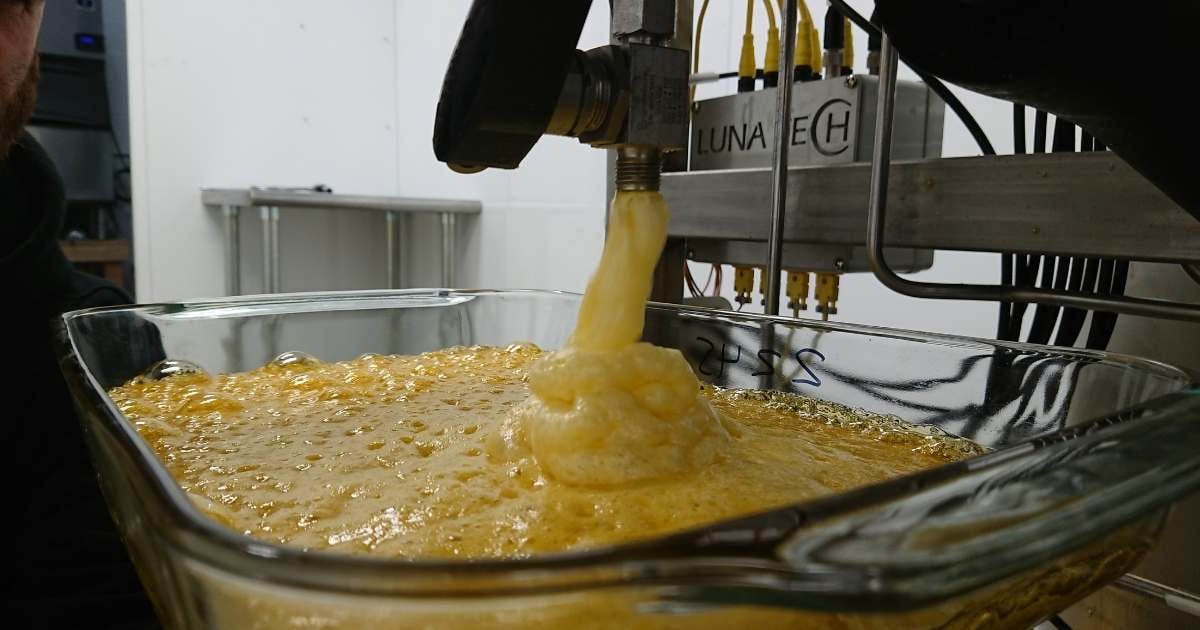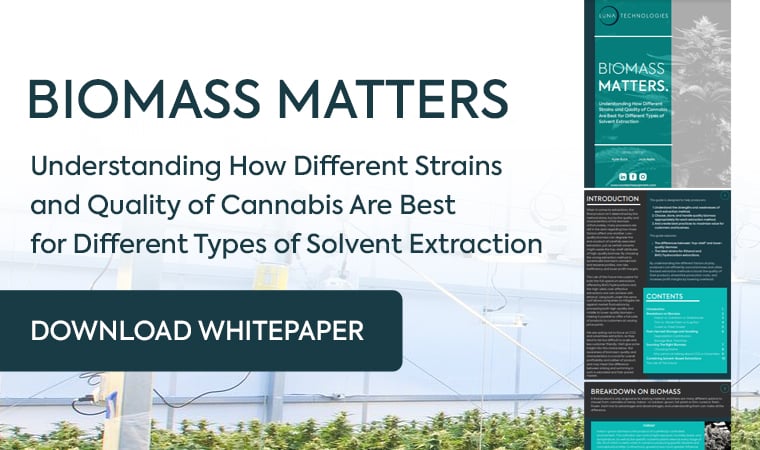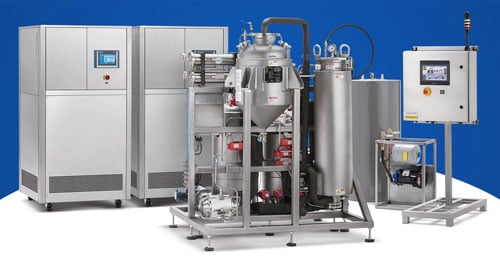Hemp and cannabis have kickstarted a green revolution where a single plant can provide many sustainable uses. From the live resin vape cartridge to the soothing cannabis topical you use to relieve minor aches and pains, the product’s life cycle begins on the farm. After months of careful plant care, the crop is ready to be smoked, vaped, or infused.
Cannabis and hemp biomass is the source of nearly every product found in today’s dispensaries. Cannabis’ buds, stalks, stems, and seeds can be used for more than just getting high. As long as producers have the right processing capabilities and drive, they can transform nearly every part of the plant’s components into profit. It all starts with the biomass.

What Is Biomass?
Generally, biomass refers to the stalks, stems, and leaves of the plant. While not common, some refer to its dried herb in bulk as biomass, too. The high-trichome organic matter, known as its cannabis buds, supports the flower and premium extract market. The leftover plant material doesn’t have as much trichome density as its buds, but can be transformed into a number of functional and sustainable products.
Besides accounting for high-grade or low-grade biomass, producers must choose between hemp and marijuana biomass. Cannabis is the only source for THC, while hemp biomass is used to extract CBD, known to modulate the effects of THC, as well as relieve pain, inflammation, and anxiety. Hemp biomass contains trace amounts of THC, which won’t cause intoxication.
Traditionally, each component of the hemp plant is dried separately or together. After drying, they are combined and shredded for easier packaging. Once packaged, the kilo of hemp biomass is sold in bulk. High-quality biomass can contain between 5 to 15 percent cannabinoids and terpenes by weight.
Ideally, a representative sample of the biomass is analytically tested for contaminants. Farmers will usually send a sample to a third-party laboratory for evaluation. Apart from cannabinoid and terpene analysis, testing evaluates the biomass for pesticides, heavy metals, and microbials. Testing throughout the supply chain ensures the biomass is of the highest order.
How Is Biomass Used?
Dried herb biomass can be dried and cured to be sold as flower eighths or pre-rolls. Cannabis extraction can produce a concentrated extract containing varying levels of cannabinoids, terpenes, flavonoids, and other essential oils. To preserve its native terpenes, cannabis flower buds are flash frozen after harvest. The resin can be extracted to make a variety of flavorful extracts for the premium consumer.
Hemp biomass (stalk, seeds, stems) has shown great promise as an alternative source for many industrial goods. In light of the climate catastrophe that awaits us if sustainability isn’t top of mind, hemp biofuel in the form of biodiesel and ethanol can be game-changing. Biodiesel is made by pressing the hemp seeds to extract their oils and fats and additional refining processes. Hemp can also be fermented to make ethanol, another biofuel.
In some cases, the cannabis waste produced throughout the harvesting, drying, and curing process is hand-sorted and mulched to be used as a soil amendment. When most of the hemp and cannabis waste is being burned or buried, recycling these materials can yield promising bioproducts. Hemp biomass and waste can produce a wide range of products from animal bedding to hempcrete and more.
When harvesting, hemp plants are cut and allowed to dry for a few days or weeks. Retting is a process that uses moisture and microbes to break down the pectin that binds the hemp stem together. Retting can be performed in a number of ways. Field retting involves letting the hemp plants naturally decompose for a few weeks. Water retting involves immersing the hemp plants in water. In some cases, enzymes are used to break down the hemp plants.
Retting makes it easier to mechanically or chemically separate the outer shell from the woody core (hurd). A decorticator is a machine used to separate the outer shell from the hurd from wet or dry hemp. After removing the hurd, processors decontaminate, degum, whiten, and soften the material.
Extracted biomass can support a large bioproduct economy, especially for the construction industry. Hempcrete, in particular, is a hemp-based concrete used as an alternative to traditional building materials. Fiber board/hemp plywood is a popular alternative for plywood, while the hemp fiber can be used for insulation or to make papers and plastics.
Hemp’s seeds can make hemp seed oil, while its hurd can help make hemp rolling papers. De-hulled hemp seeds/nuts are nutritionally-rich food products and hemp seed can be used for bird food. Its cellulose has potential in cannabis packaging, while its lipids, fats, and waxes, can be used to make hemp topicals. New technology and processing techniques are helping producers use every last inch of hemp biomass.
Hemp Biomass for CBD Isolates
Hemp biomass consisting of high-quality hemp flower buds (mainly) is the precursor to one of the wellness consumer’s favorite products. CBD isolates containing up to 99.9 percent CBD come in a crystal or powder form that can be vaporized, ingested, or consumed sublingually. As an odorless, tasteless, and non-intoxicating product, CBD isolates are a versatile product that can provide relief for a number of medical conditions.
Ideally, the hemp is sourced from a local farm and processed using a closed-loop extraction system. The initial extraction process results in a crude hemp extract. The crude extract contains cannabinoids, terpenes, flavonoids, lipids, waxes, and other nutrients. Through winterization, the excess plant waxes and fatty lipids are removed.
Afterward, the crude hemp extract is decarboxylated to convert its acidic CBDA compound into its primary and active CBD compound. The decarbed oil undergoes a fractional distillation process to remove the chlorophyll, terpenes, and other compounds beside CBD. Further refinement happens via a preparative chromatography process. The process separates the cannabinoids by putting them through various chemicals at different speeds.
After chromatography, the CBD concentrate is mixed with a non-polar solvent in a reactor. The mixture is heated and cooled to precipitate out only CBD in a crystal form. The CBD is washed with the same solvent to remove the residual contaminants. Then, it’s placed in a vacuum oven for about 48 hours to remove the solvent. CBD isolates are an effective product for those who don’t want THC in their system.

Fresh Frozen Biomass for Live Resin
Live resin represents the "cannasseur" segment’s prime choice of extract. Live resin differs from isolates in terms of its cannabinoid and terpene content. Unlike isolates, which have no THC, live resin does and plenty of it. Live resin’s use of fresh frozen dried herb captures the plant’s natural and active ingredients without the risk of degradation. Traditional curing and drying processes can degrade the original aroma, flavor, and potency.
Hydrocarbons are the cannabis industry’s go-to solvent due to their relatively low boiling points compared to other solvents used for commercial processing. Fresh frozen cannabis buds already capture the strain’s unique bouquet of scents and its psychoactive THC. BHO extraction equipment uses chilled solvent to delicately separate the material’s most therapeutic compounds.
After the initial separation process, the resulting crude oil is placed in a vacuum chamber. Under low temperatures, the residual solvent is evaporated leaving behind a golden and sugary extract with a high terpene and cannabinoid content. Live resin requires the highest-quality biomass possible to ensure the final product has high levels of terpenes and cannabinoids.
The Future of Biomass Waste
Every part of the plant, including its soil, has a potential alternative use. In an industry with a monstrous waste disposal problem, sustainable cultivation, sourcing, and processing of biomass is a win-win for producers and the environment. Unfortunately, some states have regulations that prevent companies from selling its waste byproducts.
Hemp’s fiber, pulp, seed, wax, and fats represent a tremendous business opportunity for operators with the proper infrastructure and processing capabilities. Dried herb can support the cannabis derivatives market and its waste can make everything from hempcrete for the construction industry to cardboard for cannabis packaging.
Cannabis and hemp biomass quality is of supreme importance for producers and consumers. From seed to oil, the plant’s supply chain must ensure quality is never compromised. Luna’s IO Extractor is a leading example of a system that optimizes the biomass extraction process to meet the exacting needs of today’s market.
Learn more about our fully-automated BHO extraction system here.



